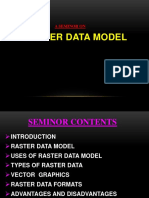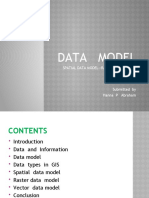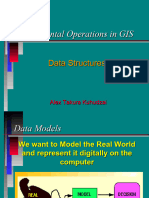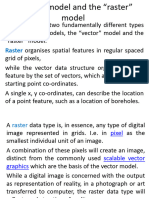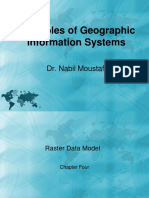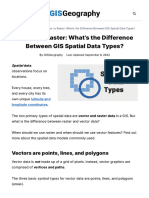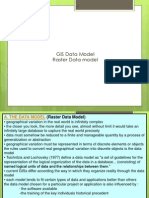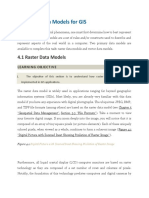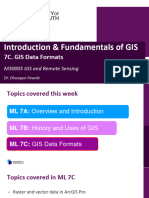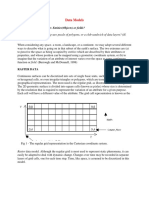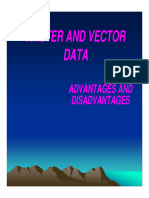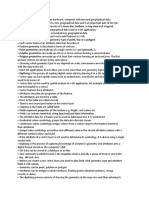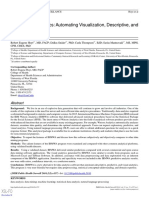0% found this document useful (0 votes)
18 views29 pagesRaster Data Model
The document provides an overview of the Raster Data Model used in Geographic Information Systems (GIS), detailing its structure, types, advantages, and disadvantages. It explains how raster data is represented in a grid format with cells that store values, and discusses various applications such as satellite imagery and digital elevation models. Additionally, it highlights the differences between raster and vector data, along with the implications of data resolution and storage formats.
Uploaded by
rajesh9844591061Copyright
© © All Rights Reserved
We take content rights seriously. If you suspect this is your content, claim it here.
Available Formats
Download as PPTX, PDF, TXT or read online on Scribd
0% found this document useful (0 votes)
18 views29 pagesRaster Data Model
The document provides an overview of the Raster Data Model used in Geographic Information Systems (GIS), detailing its structure, types, advantages, and disadvantages. It explains how raster data is represented in a grid format with cells that store values, and discusses various applications such as satellite imagery and digital elevation models. Additionally, it highlights the differences between raster and vector data, along with the implications of data resolution and storage formats.
Uploaded by
rajesh9844591061Copyright
© © All Rights Reserved
We take content rights seriously. If you suspect this is your content, claim it here.
Available Formats
Download as PPTX, PDF, TXT or read online on Scribd
/ 29
